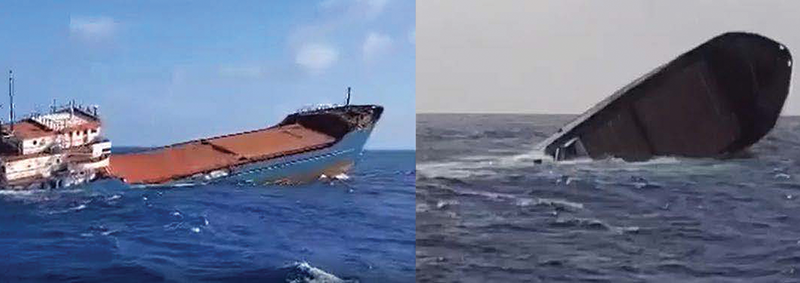
The investigation into the March 6, 2022, flooding and sinking of the cargo vessel Carib Trader II has concluded and the National Transportation Safety Board has issued its final report on the incident.
The uncrewed, 274-foot general cargo vessel took on water and sank near the Magallanes Bank, approximately 25 miles northwest of Santo Domingo Cay, Bahamas, during a dead ship tow from the Port of Miami to Haiti for repairs, a four-day transit.
The ship was being relocated to a Haiti shipyard for repairs while being towed by the Capt. Beau, which had five crewmembers aboard.
After the sinking, Capt. Beau returned to Miami.
Carib Trader II sank stern first in 3,300 feet of water, leaving a small debris field.
The vessel had been detained in Miami by the U.S. Coast Guard since November 2020 due to numerous safety, security, and environmental deficiencies.
The Carib Trader II’s last drydock inspection had occurred on February 16, 2018, and a drydock examination, due by February 16, 2021, never occurred.
Divers conducted a visual inspection in November 2021, but this examination would not have been able to determine the structural condition of the hull.
Between November 2020 and the casualty event, the vessel only got underway for dead ship berth shifts within the port of Miami.
In February 2022, a flag-state surveyor and U.S. Coast Guard inspectors examined the vessel prior to approving the dead ship tow from Miami to Haiti.
They found the above-water hull, decks, and weather and watertight closures to be satisfactory.
Because the vessel was moored, the underwater hull was not examined.
According to the NTSB, the tow line bridle to the Carib Trader II parted in wind and sea conditions that almost exceeded the maximum allowed in the tow plan.
In addition, the ship’s port anchor chain had payed out and the ship was riding lower at the stern.
The increased drag from the tow’s greater draft and a trailing anchor, combined with dynamic loading of the towline assembly in the nine-foot seas and 24–30-knot winds, would have increased forces on the bridle.
After boarding the vessel, Capt. Beau’s mate found the engine room flooding, and, although he attempted to dewater with a portable pump prestaged for the dead ship tow, the pump was unable to keep up with the flooding.
Because the engine room was found to be flooding rapidly, “it is likely that the source of the flooding was below the waterline,” the report said.
The report also highlighted that the Carib Trader II, “known for its substandard care and maintenance, had been in layup for two years.
The vessel’s inspection history suggests she was in poor condition, further substantiated when the mate found the engine room flooding rapidly upon boarding the vessel.”
The NTSB report concluded that the probable cause of the flooding and subsequent sinking of the Carib Trader II while under dead ship tow was “the uncontrolled flooding of the engine room from an undetermined location below the waterline.”
Carib Trader II was registered in St. Vincent and the Grenadines.

